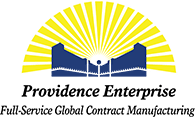Market trends are driving significant consolidation within the medical device industry. OEMs are collaborating with suppliers that can provide solutions for multiple steps in the supply chain thereby:
- Freeing up capital
- Reduce workload
- Increasing quality control
- Improving lead times
What’s driving this consolidation? Medical device OEMs are under heavy pressure to reduce costs in their highly complex supply chains. As such, cutting edge procurement professionals are seeking strategic supplier relationships that can reduce this complexity. Additionally, this industry is seeing increased regulation and increased competition.
The Burden of Increased Regulations
Over the years, regulatory bodies, including the FDA, have increased the requirements for supplier controls. This requires medical device OEMs to allocate additional time assessing and validating each supplier’s process controls in addition to all standard procurement activities. OEMs are burdened with the requirements of keeping increasingly detailed records, conducting additional audits and performing a larger number of on-site visits. The responsibility of these additional tasks falls to both procurement professionals and quality teams, both of whom are feeling the strain.
The Impact of Industry Pressures
In 2010, the Patient Protection and Accountable Care Act granted organizations providing Medicare services the ability to set reimbursement payments based on a measure of efficiently providing high-quality care. This is a migration from historically service-based pricing to a value-based model. As a result, innovation of medical devices is encouraged to increase patient recovery time and reduce hospital stays.
Additionally, within the healthcare industry, payer organizations are routinely adjusting the details behind medical device reimbursements. Over the past several years, the value of these reimbursements has been decreasing and the impact is felt throughout multiple places within the supply chain.
Rising Costs and Limited Manpower
Increased global regulations and changing industry pressures have left OEMs with rising costs and limited manpower. The additional activities to monitor quality and process controls throughout the supply case require additional personnel, but additional personnel would contribute further to rising costs.
The strategic answer for many medical device OEMs is to partner with suppliers that provide services in addition to basic manufacturing capabilities. Essentially, leading-edge procurement professionals are seeking suppliers who can take over a portion of the OEMs responsibilities and the responsibilities of multiple suppliers.
Leveraging Value-add Suppliers
Finding these unique suppliers reduces the supply base by consolidating the functions of multiple suppliers into one. A supplier review process can reduce an OEM’s approved supplier list by up to 30%.
Leveraging value-add suppliers also reduces the workload of the OEM’s procurement and quality teams who are already resource-limited, thus freeing up their time for strategic activities such as product innovation projects targeting cost reductions while maintaining quality performance.
With strategic suppliers actively participating in process controls and additional value-add services such as inventory management and collaborative product design, the risk of regulatory action against medical device OEMs is further reduced.
A consolidated supply chain with reduced complexity can also save OEMs significant time and money on the following activities:
- In-house parts inspections,
- Sampling inspections when receiving inventory,
- Chain history for medical device records,
- LTL shipping costs,
- Shipping, purchase order and invoice paperwork,
- Lead times and recommended inventory levels.
Conclusion
Industry pressures and increased regulatory requirements in the healthcare industry have driven up costs, increased manpower requirements and created a very complex supply chain for medical device OEMs. Leading procurement professionals are addressing these challenges by partnering with key suppliers who can provide additional services across multiple points in the supply chain.
OEMs who have partnered with these suppliers have seen a reduction in cost, a reduction in risk, a reduction in supply chain complexity and a reduction in internal resource requirements. Supplier consolidation has become an advantageous strategy for competing in this industry.

